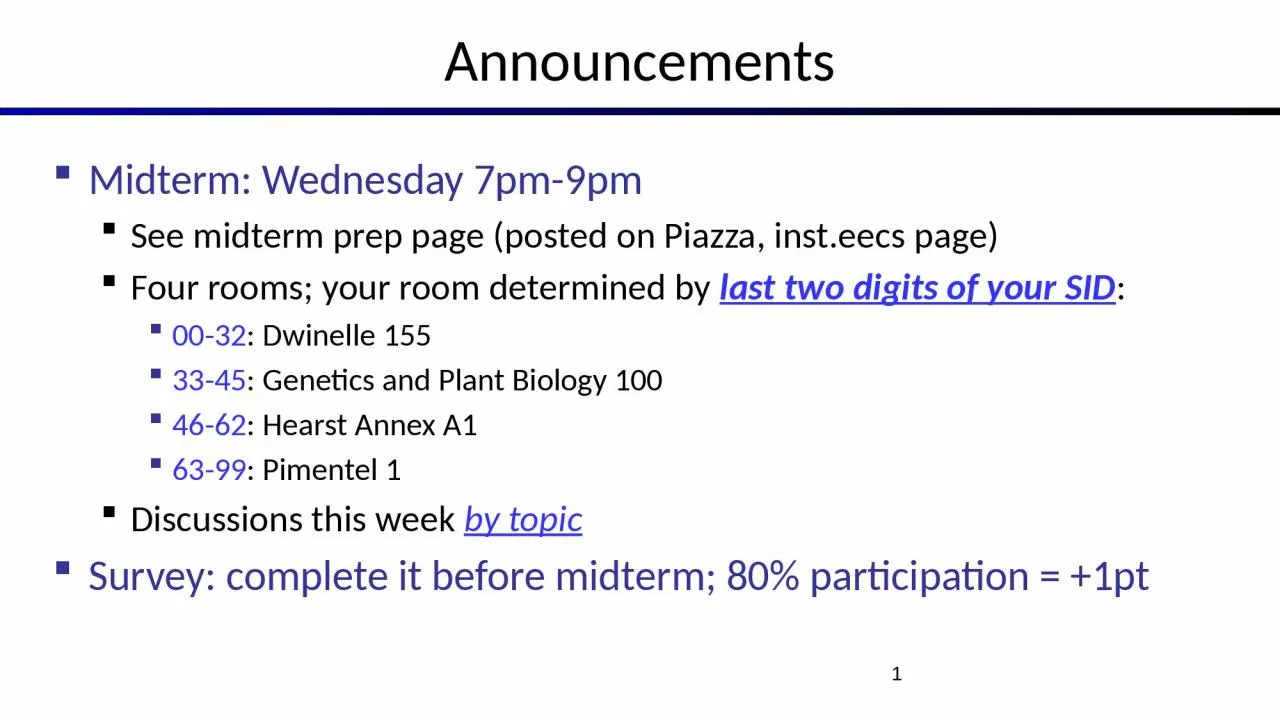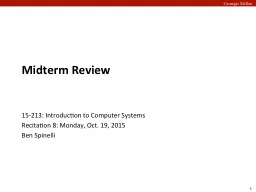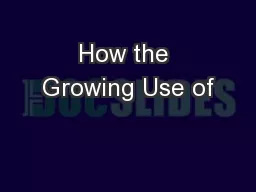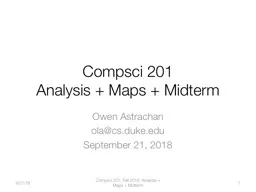PPT-Announcements Midterm: Wednesday 7pm-9pm
Author : caitlin | Published Date : 2022-06-08
See midterm prep page posted on Piazza insteecs page Four rooms your room determined by last two digits of your SID 0032 Dwinelle 155 3345 Genetics and Plant
Presentation Embed Code
Download Presentation
Download Presentation The PPT/PDF document "Announcements Midterm: Wednesday 7pm-9pm" is the property of its rightful owner. Permission is granted to download and print the materials on this website for personal, non-commercial use only, and to display it on your personal computer provided you do not modify the materials and that you retain all copyright notices contained in the materials. By downloading content from our website, you accept the terms of this agreement.
Announcements Midterm: Wednesday 7pm-9pm: Transcript
Download Rules Of Document
"Announcements Midterm: Wednesday 7pm-9pm"The content belongs to its owner. You may download and print it for personal use, without modification, and keep all copyright notices. By downloading, you agree to these terms.
Related Documents














